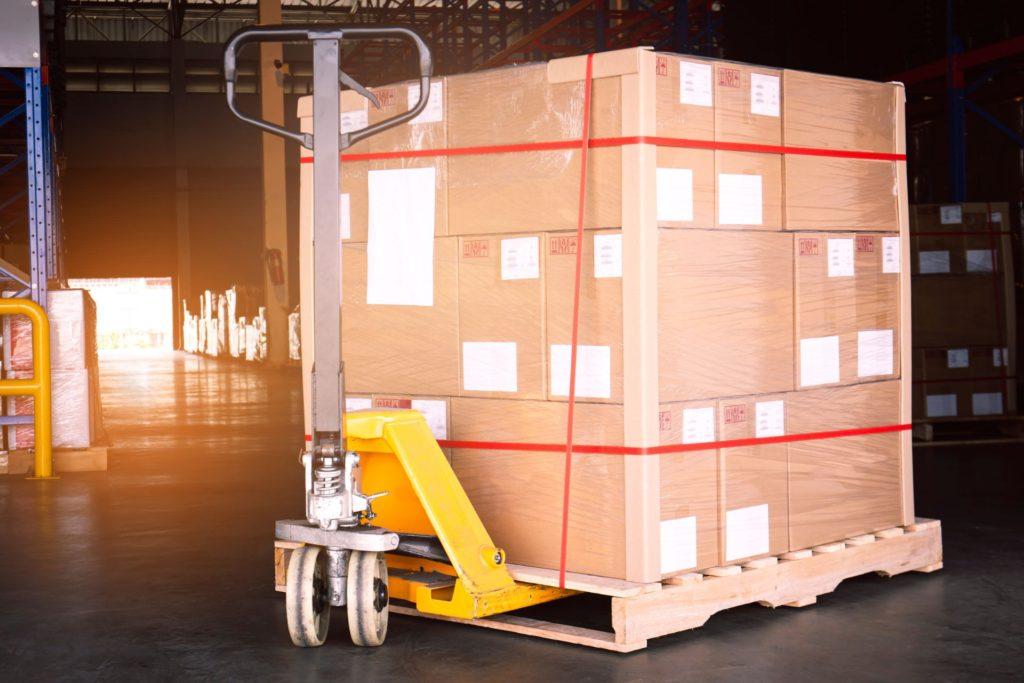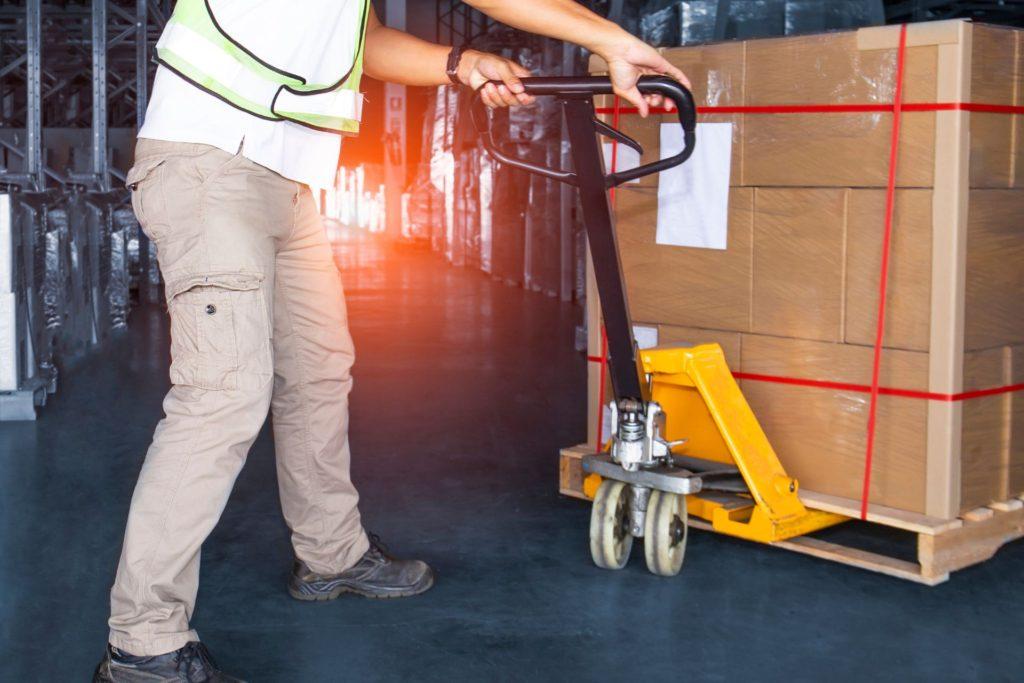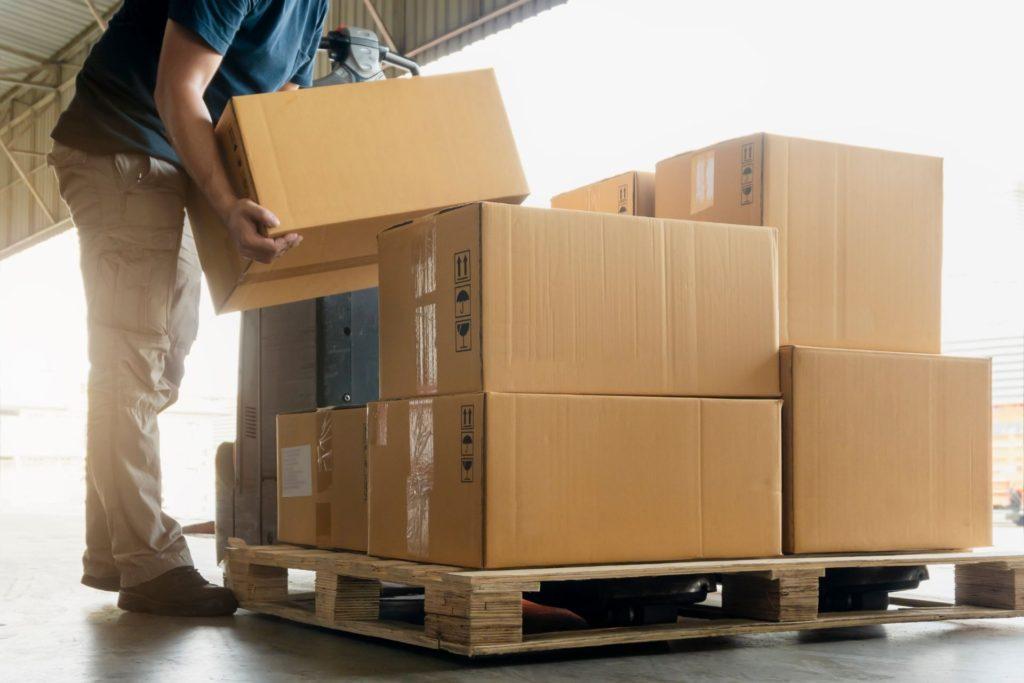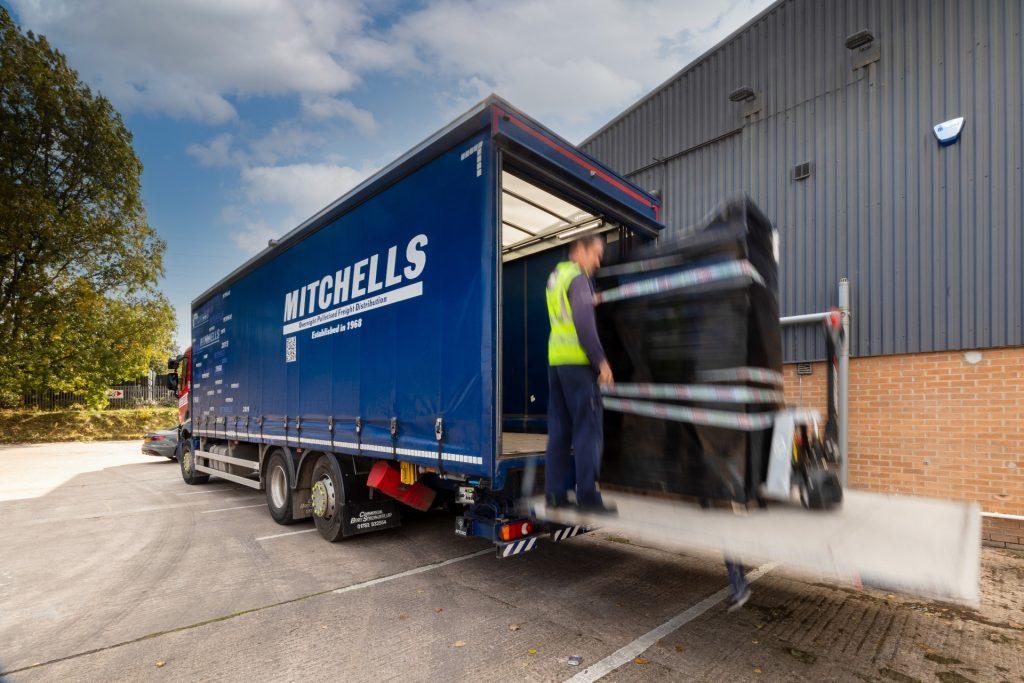Pallet deliveries are the backbone of modern logistics, ensuring goods reach their destination safely and efficiently. However, common pallet shipping mistakes can lead to costly delays, damages, and headaches. In this post, we’ll uncover these pitfalls and provide practical advice to help you avoid them. By following our tips, you can successfully ship a pallet, streamline your pallet deliveries and save time and money.
TLDR – Mistakes people make when booking pallet deliveries
Common pallet mistakes that people make when booking delivery include:
- Inaccurate pallet dimensions and weight.
- Improper packaging including unsecured packing and using damaged pallets.
- Neglecting delivery instructions, including errors in documentation, missing labels, and ignoring restricted item lists.
- Choosing the wrong pallet delivery service.
- Ignoring insurance coverage.
- Booking a delivery too late.
- Missing collection and delivery times.
- Ignoring restricted items lists.
- Not asking for help.
Mistake 1: Inaccurate pallet dimensions and weight
The first common pallet shipping mistake is providing inaccurate pallet dimensions and weight. Getting the measurements of your pallet spot on is crucial for a smooth delivery. Incorrect dimensions or weight can lead to a domino effect of problems, from delayed deliveries to unexpected charges to outright rejection of your goods.
Why accurate measurements matter
- Carrier compatibility: Different carriers have specific size and weight restrictions. Incorrect information can result in your pallet being rejected.
- Pricing: Pallet shipping costs are often calculated based on dimensions and weight. Underestimating these can lead to additional charges when your pallet is weighed and measured at the depot.
- Loading efficiency: Accurate measurements help carriers when loading and unloading pallets efficiently, reducing the risk of damage and delays. Overloading your pallet, incorrectly distributing the weight of your pallet and improper stacking are all common culprits for pallet damage and can cause them to collapse, ultimately damaging your goods.
Tips for measuring pallets correctly
Richard Montgomery, Managing Director at Mitchells said: “To measure your pallets correctly, accurately measure all sides – the length, width and height. Ensure the load doesn’t overhang. Using the wrong pallet size can affect dimensions and stability. The weight will need to be evenly distributed and items securely packed. If your goods overhang the pallet or are heavy items, consider our oversized pallet delivery service.”
He continued: As well as the dimensions of the pallet we will need to know the total weight of the pallet and its contents. Make sure to use a reliable scale when weighing your pallet and ensure the total weight doesn’t exceed the pallet’s capacity.”
By taking the time to accurately measure and prepare your pallets, you can avoid costly mistakes and ensure a smooth delivery process.
More reading
Properly stack your pallet with our Pallet Stacking Patterns guide
Avoid damage to your goods during transit with our guide
Mistake 2: Improper packaging
The second common pallet shipping mistake is improper packaging. Proper packaging is your goods’ first line of defence against the rigours of transit. With goods moving multiple times during their journey, cutting corners on packaging can lead to costly consequences.

The risks of poor packaging
The risks to your goods due to poor or substandard packaging can include:
- Damage to goods: Inadequate packaging can result in broken, scratched, or crushed items, leading to financial losses and customer dissatisfaction.
- Delivery delays: Damaged goods may require returns or replacements, causing delays in the supply chain.
- Increased shipping costs: Damaged items can lead to claims and increased insurance premiums.
Packaging materials and techniques
Richard adds: “When it comes to packing your pallet it’s important that you choose the right materials. Select materials that match the weight and fragility of your goods. Options include cardboard boxes, wooden crates, bubble wrap, foam padding, and stretch wrap.
“Ensure that boxes are the right size: The correct boxes can prevent your items from shifting and becoming damaged during transport.
“Use ample cushioning materials like bubble wrap or foam to safeguard delicate goods and use strong tape to reinforce boxes and prevent them from opening during transit.”
Securing goods on pallets
Unsecured packing and damaged pallets can lead to catastrophic results. A poorly packed pallet can collapse, causing widespread damage to your goods. Always prioritise the safety and protection of your products through proper packaging and securing.
When securing your goods on your pallet it’s important that you select a pallet that can support the weight of your goods. Filling voids with packing materials can help prevent damage to your goods. Use stretch wrapping around the pallet to secure it and prevent items from shifting during transit. Our guide for wrapping a pallet will help if you’re unsure.
By investing time and effort into proper packaging, you’re safeguarding your goods and ensuring a smooth delivery process.
Mistake 3: Neglecting delivery instructions
Clear delivery instructions are required to ensure your shipment arrives at your intended destination. Overlooking this crucial step can lead to costly delays and misdeliveries. Here’s how you can avoid this common pallet shipping mistake

Importance of clear delivery instructions
Providing detailed delivery instructions is the key to a smooth delivery, ensuring your goods arrive on time and at the correct location. Many times we have seen customers pay for their shipping and then realise that they have given the wrong address!
Providing clear delivery instructions avoids miscommunication between you and your carrier.
Consequences of unclear or missing instructions
By providing unclear or missing delivery instructions, you risk serious disruption to your delivery. Ambiguous or missing instructions can confuse the carrier, risking delays and risks your shipment being delivered to the wrong place or not at all. For fragile goods or those that require special handling instructions, by not providing these instructions, you risk goods being mishandled and damaged during transit.
Essential delivery instructions
To avoid these pitfalls, we recommend that you provide the following information where applicable:
- Access restrictions: Specify any gate codes, access requirements, or delivery time windows.
- Delivery preferences: Indicate preferred delivery location (e.g., front door, back entrance).
- Contact information: Provide a clear point of contact with phone number and email address.
- Special handling: Specify if your shipment requires special handling, such as fragile or hazardous materials.
- Use delivery notes or special instructions: Clearly communicate any specific requirements or requests. Use delivery notes to reference any additional documentation.
- Verification: Ensure all information is accurate and complete. Double and triple-check your documentation, especially if goods are being sent to Europe.
Incorrectly attached delivery labels
Incorrectly attached delivery labels are a common pitfall that can disrupt your delivery. When attaching a delivery label to a pallet, it’s important to consider the following:
- Placement: Labels should be placed on at least two sides of the pallet, vertically, and on a flat surface that’s about 30 cm from the ground. This ensures the labels are easy to see and scan, and reduces the risk of losing them during transit. Any labels with tracking information should be clearly visible.
- Label adhesion: Some labels may not stick well to certain surfaces, like wood, brick, or cold steel. You can try stapling them to the pallet base or crate if they’re having trouble sticking.
- Label condition: Keep labels clean and dry, and avoid folding them. You should also avoid applying wrap over the top of the labels.
By providing clear and detailed delivery instructions and making sure your delivery labels are correctly attached you’re taking a proactive step to ensure a successful delivery.
Mistake 4: Choosing the wrong pallet delivery service
Selecting the right carrier is a critical decision that can significantly impact the success of your pallet delivery. Choosing the wrong one is another common pallet shipping mistake and can lead to delays, damages, and increased costs.

Importance of selecting the right carrier
A reputable carrier prioritises timely and accurate deliveries. A carrier with a good track record is also more likely to handle your goods with care.
Factors to consider when choosing a carrier
There are a few things to consider when selecting a carrier to deliver your pallets. Here are some things to consider:
- Price: Compare shipping rates from different carriers, but avoid basing your decision solely on price.
- Transit time: Consider the carrier’s delivery times to meet your customers’ expectations.
- Service level: Evaluate the carrier’s services, such as tracking, insurance options, and customer support.
- Insurance: Check the level of insurance coverage offered by the carrier to protect your goods.
Tips for comparing different carriers
When it comes to comparing carriers, Richard said: “No two providers are the same. Each will offer something slightly different. To help choose a delivery partner check online reviews and customer feedback to gauge a carrier’s reputation.
“Obtain quotes from multiple carriers to compare prices and services and ask about insurance. Understand the carrier’s insurance coverage and any additional options that might be available.
“Another consideration will be carrier size. Larger carriers may offer more services and have more resources, while smaller carriers might provide more personalised attention. Mitchells offers the best of both worlds as a large, family-run carrier.”
Benefits of using a reputable and reliable carrier
Finding and using a reputable palletised distribution company brings its own benefits to your business. Richard said: “A reliable partner means deliveries are made on time leading to increased satisfaction for your customers. A respected provider will streamline your logistics process.”
By carefully evaluating your options and selecting a carrier that aligns with your specific needs, you can significantly improve the efficiency and reliability of your pallet deliveries.
Mistake 5: Ignoring insurance coverage
Insurance is often seen as an unnecessary expense, but when it comes to pallet deliveries, it’s a crucial safety net. Shippers who neglect insurance coverage risk significant financial losses in case of accidents, damage, or loss.

Importance of insurance for pallet deliveries
Having adequate insurance provides financial protection for you. It safeguards your investment in the event of damage or loss. Should the worst happen and your shipment be lost or damaged, you could face substantial financial losses without insurance.
Tips for choosing adequate insurance coverage
When choosing insurance coverage you will need to:
- Assess your needs: Determine the value of your goods and the level of risk involved in the shipment.
- Compare policies: Review different insurance options and compare coverage, premiums, and claims processes.
- Understand the terms of your policy. Read your documentation carefully to understand what is covered and what exclusions apply. Be aware of the claims procedures. Clarify any doubts with the provider beforehand and keep records of your shipment, packing slips and photos of the goods.
- Consider additional coverage: Explore options for additional protection.
By investing in adequate insurance coverage, you’re protecting your business from potential financial setbacks, ensuring peace of mind during the shipping process and avoiding another common pallet shipping mistake.
Mistake 6: Booking delivery too late
The most common shipping pallet mistake that we see is booking a pallet delivery at the last minute. This can lead to a world of problems. Where we can, we will do our best to accommodate a last-minute booking, but we can’t guarantee it. Planning ahead is essential for a smooth and efficient delivery process.
Importance of planning ahead
Planning ahead is imperative in ensuring a smooth delivery process. Carriers often have limited capacity, especially during peak times, so booking in advance ensures that there is availability to handle your delivery.
Last-minute deliveries can often come with a premium charge, or limited service options (though we don’t!). Planning ahead will also give you time to make sure that your pallet is ready for collection. Deliveries can be pressured enough without the added stress.
Tips for booking deliveries in advance
When it comes to booking your deliveries in advance, Richard advises: “Consider when you need the goods to arrive and book accordingly. Plan well in advance where possible.”
“Allow for flexibility and build in ample buffer time to account for any unexpected delays. Be aware of busy periods and book well in advance. Speak to our sales team if you’re unsure about busy periods, or if your delivery can be made in time. They will do their best to accommodate you where possible.
“By planning ahead you can avoid the stress of last-minute bookings and ensure a successful delivery.”
Mistake 7: Missing Collection/Delivery Days
Overlooking your scheduled collection or delivery date can have severe consequences for your business operations. Ensuring you’re present or have arranged for someone to be there on the designated day is crucial.

Importance of not missing dates
Missing your collection or delivery date can disrupt your whole supply chain, not to mention the wasted journey from one of our drivers. Missed collections or deliveries will result in additional fees for redeliveries. You may also incur storage fees. Missed collections can also lead to reputational damage as your customers are left waiting.
Tips for not missing dates
Missing collection or delivery dates is not good for anybody and is a common pallet shipping mistake that can be easily addressed. Richard said: “The key to not missing a collection or a delivery is communication.
“Mark any dates on your calendar and set reminders. If you can’t be there for whatever reason, delegate the responsibility to somebody else. If you anticipate a potential issue, contact the carrier as soon as possible to save them from making the journey and to arrange an alternative date. We understand that life gets in the way sometimes and plans change, but the haulage industry already produces a large amount of CO2 and removing these unnecessary journeys can help us reduce our footprint.”
Mistake 8: Ignoring restricted goods lists
Shipping restricted goods without proper authorisation can be problematic. If your shipment contains restricted items, it may be delayed or refused for transportation. In severe cases, your goods may be seized by the authorities and there may be legal repercussions.
Richard said: My advice would be to check the list of restricted goods. Each carrier will have one. For hazardous materials, Mitchells is a part of the Hazchem network. Speak to our sales team about how we can help.”
More reading
Palletways list of restricted items
Hazchem Network restricted items
Richard added: “By understanding and adhering to restricted goods lists, you can ensure the smooth transportation of your shipments.”
Mistake 9: Not Asking For Help
Sending a pallet can be confusing, especially if you don’t do it regularly. A mistake we commonly see is people not asking for help when they are unsure. This can lead to increased costs or cause delays.

Richard said: “My biggest piece of advice in avoiding these common pallet shipping mistakes is to speak to our sales team if you are unsure about anything regarding your delivery. No matter how small or trivial. They are always happy to help.”
Contacting Mitchells
- Telephone: 01623 555707
- Email: sales@mitchellsofmansfield.com
- Also available on live chat.
In Summary
Navigating the complexities of pallet deliveries can be challenging, but by avoiding common mistakes, you can significantly improve the efficiency and reliability of your shipping process. From accurate measurements and proper packaging to selecting the right carrier and securing adequate insurance, attention to detail is key.
Remember to plan ahead, communicate clearly, and stay informed about carrier guidelines. By following these tips, you can streamline your pallet deliveries, reduce costs, and enhance customer satisfaction. Ready to optimise your pallet deliveries? Contact our sales team for expert advice on shipping solutions tailored to your business needs and avoid common pallet shipping mistakes.